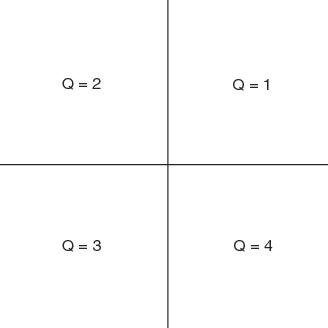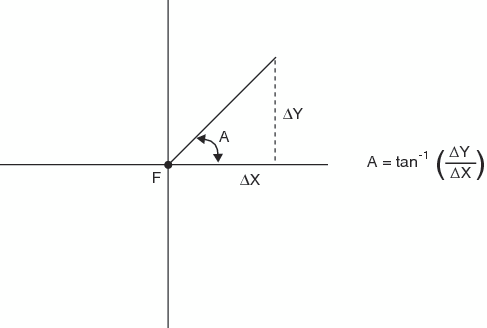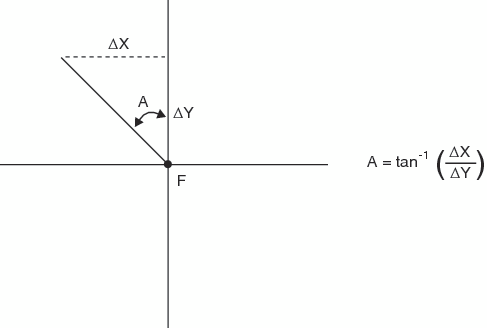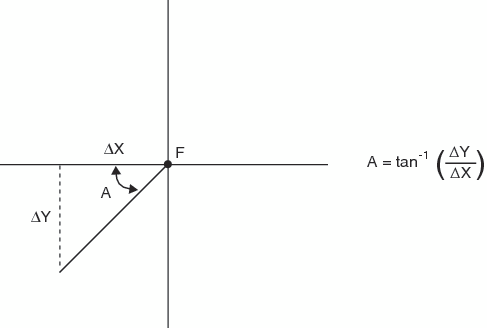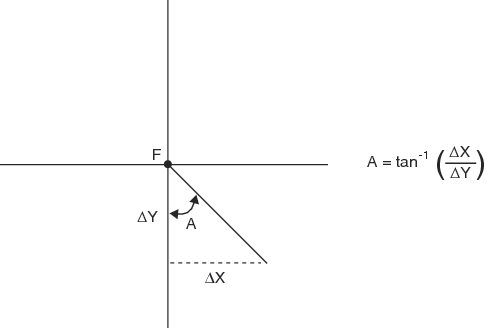RANK Value Equation
Overview
RANK is the sorting
key used to sort multiple chains that have a common node by their
angle, starting from 0 at due east and proceeding counterclockwise.
A node can be either of the two end-points of a chain.
RANK values have the
form ffffff.tttttt, where the ffffff value is used to sort the chain around
its from-node and the tttttt value is used to sort the chain around its to-node. The ffffff and tttttt components are calculated using the following formula:
where
is the quadrant number
(1 to 4) that contains the angle α for the chain. See Quadrant Numbers for details
of the quadrant numbers.
For the ffffff component, α is defined by the vector
F→D0, where F is the from-node and D0 is the first detail point. For chains that have no
detail points, D0 is the to-node. For the tttttt component, α is defined by the vector
T→DL, where T is the to-node and DL is the last detail point. For chains that have no detail
points, DL is the from-node.
The tangent term is
called the half-angle tangent. Because the angle A/2 can never exceed
π/4 (45 degrees), the half-angle tangent has values from 0 to
1. The (Q-1) multiplier adjusts the range of values to 0 to 4. The
values 0, 1, 2, 3, and 4 represent angles of 0, 90, 180, 270, and
just under 360 degrees, respectively.
Calculating the Value of A in a Quadrant
The following figure
illustrates the relationship of the quadrants to each other. Note
that their numerical order is counterclockwise.
The following calculations
were used to determine the rank in Calculating Rank in Quadrant 1:
The following calculations
were used to determine the rank in Calculating Rank in Quadrant 2:
The following calculations
were used to determine the rank in Calculating Rank in Quadrant 3:
The following calculations
were used to determine the rank in Calculating Rank in Quadrant 4:


